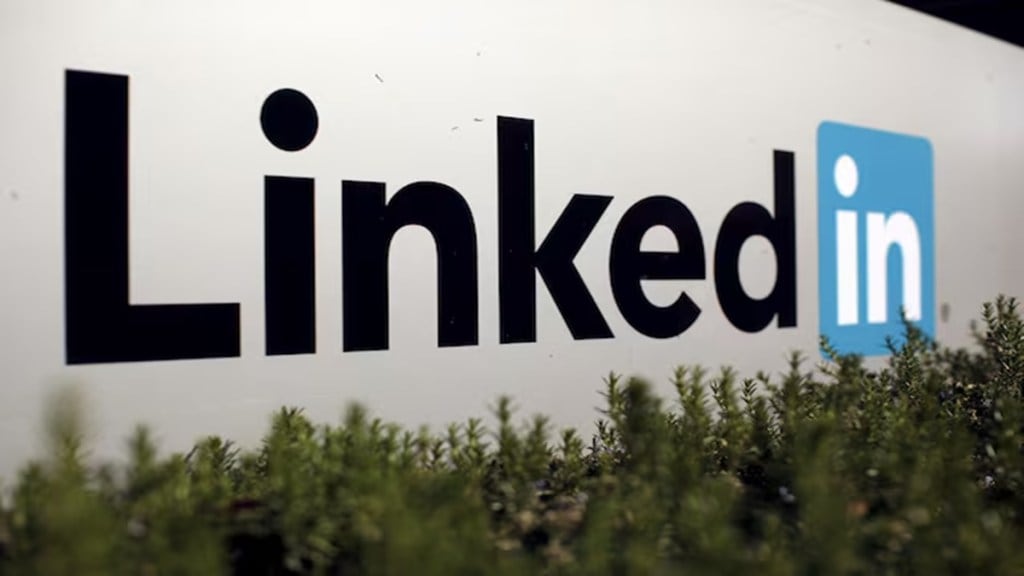When Priyanshi Sharma, an independent journalist and currently a student at Indian School of Business, Hyderabad, first started reporting for a TV news channel in 2022, she wanted to build her personal brand. While X and Instagram were the go-to social media platforms for most of her colleagues with a similar intent, Sharma realised that LinkedIn was an untapped space that she could use to create a name for herself.
She had two reasons — she could build a portfolio for herself on the platform by posting her work, and at the same time engage with LinkedIn’s “educated and professional audience” to start conversations about political, social, and news events that impact them closely.
It is because of Sharma and others like her that job portal LinkedIn today boasts of a 20% higher engagements with comments and views on posts, even as the platform records engagement on 1.5 million posts every minute.
The platform, launched in 2003 for professionals to seek jobs and network with others in their field, has now turned into a full-blown social media application, similar to Instagram, Facebook and X. This is something that LinkedIn India’s spokesperson tells us too. “Your time on LinkedIn should help you be better at what you do as a professional, and that’s where we’re invested — surfacing insights, news and knowledge content that sparks conversations between people on work topics you care about,” they say.
LinkedIn, which hosts more than a billion users, has in the past few years introduced newer features for its growing audience to leverage. In 2021, it unveiled a creator mode. Prior to that, it also introduced a ‘Top Voices’ badge, that recognises experts on the platform. Another feature it brought on was the ‘Thought Leader Ads’.
To cap its transition to social media, the platform now also has a short-video feed, similar to Instagram and Facebook, started early this year.
Earlier this year, the platform had announced LinkedIn Premium subscribers alone brought $1.7 billion in revenue in the last financial year. It had also shared that at least six people are hired through the platform every minute globally.
Interestingly, LinkedIn is the only job portal that has taken the leap to being a social media platform. Other job portals like naukri.com, Indeed, shine.com, and Google Jobs — that are also commonly used in India — still serve the purpose of only filtering jobs that you might be interested in, and helping you apply for them.
Like Sharma, many other people seek professional support and networking and not just job postings through job portals. This especially accelerated during the pandemic when most people in the formal work sector were forced to go remote.
For instance, Sunny Garg, the founder of Bengaluru-based real estate start-up Crib, has had an account on LinkedIn for as long as he can remember. But he started posting actively only in 2022. He tells FE, “LinkedIn is for sharing value-driven content and building meaningful connections that can shape your impact in the industry. It has evolved beyond resumes. It’s now a platform for stories, insights, and real connections. For me, it’s a space to engage with like-minded individuals and spark conversations that matter in the entrepreneurial world.”
And what does Garg post about now? About the lessons learnt and challenges faced in his entrepreneurial journey, insights on building and scaling start-ups, mentorship advice for aspiring founders who might need it, and some college experiences that shaped his career.
On the other hand, Priyan, a Delhi-based legal marketing professional, who has been active on the platform for over a decade, writes with certain end goals in mind. His usual go-to is posting “thought leadership content,” he says. He adds, “If I’m aiming to engage with industry peers, potential clients, or thought leaders, my content is focused on topics relevant to them – sharing my perspective on industry-related topics, offering advice, or discussing challenges.”
Prerna Kedia, a Bengaluru-based product manager, has recently taken to LinkedIn to share her work experiences and her achievements. It’s a good way to network, showcase your portfolio, and find freelance gigs, she tells FE, adding that there’s also the “feel good factor” when people you’ve looked up to in your professional journey congratulate you on your career growth.
Fake positivity? But then there are others who are suspicious of the content as well. Aikantik Bag, a Kolkata-based photographer, is one such person. He questions how is everyone on LinkedIn an expert on productivity? How is everyone there talking about positivity in the workplace, when most people don’t experience it in real life? How and why are HR professionals writing posts about hiring someone at 10 times the salary they asked for, which so clearly doesn’t happen? And how do multiple people copy paste the same things and claim it’s original?
“There is so much fake positivity, it can be mentally very taxing, especially if you’ve been looking for a job for months on end and had no luck,” Bag sighs.
A January 2024 media report also pointed to a similar trend, saying the platform was the epitome of a “corporatised form of positivity”.
However, the platform’s spokesperson says they have been encouraging people to “be authentic” in the content they post and that they use artificial intelligence to stop “the vast majority of fraudulent activity before it ever goes live”.
